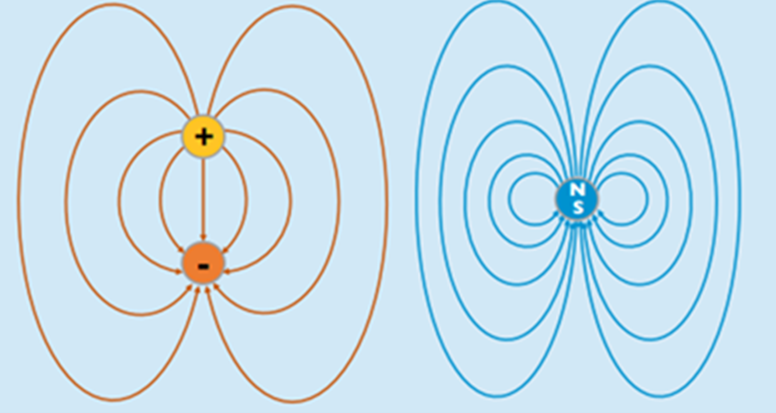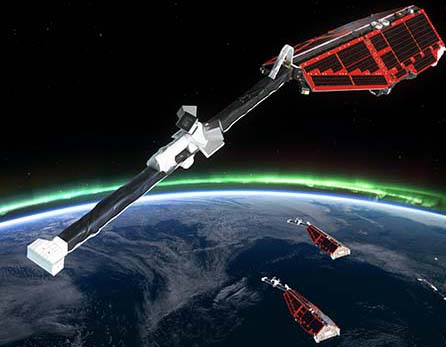
The European Space Agency’s Swarm Mission, a trio of satellites (pictured above) launched six years ago to advance understanding of Earth’s magnetic shield, has recently yielded new explanations on two of its most intriguing phenomena – the constant shifting of the magnetic North Pole and Earth’s magnetic jerks. Both have implications for many modern electronic devices such as smart phones and navigation equipment which can be affected by the magnetic shield.
Giant tug of war
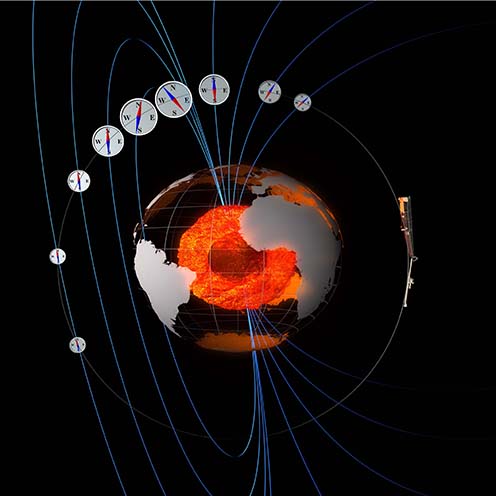
The constant shifting of the magnetic North Pole has been one of the magnetic shields most puzzling mysteries. Unlike our geographic North Pole, which is in a fixed location, magnetic north wanders. This has been known since it was first measured in 1831, and subsequently mapped drifting slowly from the Canadian Arctic towards Siberia. One of the practical consequences of this is that the World Magnetic Model must be updated periodically with the pole’s current location. The model is vital for many navigation systems used by ships, Google maps and smartphones, for example.
ESA’s Swarm mission is not only being used to keep track of magnetic north, but scientists are using its data to measure and untangle the different magnetic fields that stem from Earth’s core, mantle, crust, oceans, ionosphere and magnetosphere.
Our magnetic field exists because of an ocean of superheated, swirling liquid iron that makes up the outer core. Like a spinning conductor in a bicycle dynamo, this moving iron creates electrical currents, which in turn generate our continuously changing magnetic field.

Tracking changes in the magnetic field can, therefore, tell researchers how the iron in the core moves.
Phil Livermore, associate professor of geophysics at the University of Leeds in the UK, said, “Several theories have been proposed to explain this behavior but, since they rely upon changes in the small-scale magnetic field, they cannot explain the recent trajectory of the pole.”
“Using data collected over two decades by satellites, including ESA’s Swarm trio, we can see that the position of the north magnetic pole is determined largely by a balance, or tug-of-war, between two large lobes of negative magnetic flux at the boundary between Earth’s core and mantle under Canada and Siberia.”
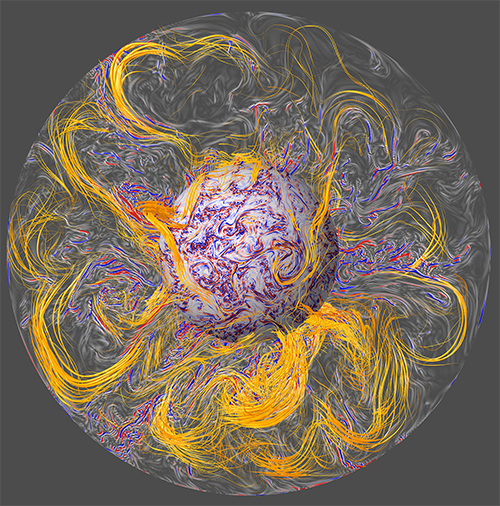
In 1978, scientists discovered the presence of geomagnetic jerks, or random rapid shifts in our protective magnetic field. However, these jerks have been poorly understood phenomenon, and difficult to forecast. Forecasts are important because the magnetic field protects us from solar storms, which have the potential to disrupt power supplies, communication links and navigation systems, for example. Adding to the difficulty of accurate forecasting, ground-based magnetic observatories are built on land, information about these jerks has been incomplete as the ocean, of course, covers 70% of Earth’s surface. But thanks to ESA’s trio of Swarm satellites, which measure variations in Earth’s magnetic field from space, scientists can now study the global structure of geomagnetic jerks.
In a paper published recently in Nature Geosciences scientists from the Paris Institute of Earth Physics and the Technical University of Denmark describe how they created a computer model for geomagnetic jerks, and they have offered an explanation as to why they happen. Our magnetic field is generated mainly by the churning of fluid within Earth’s core. Researchers know of two types of movement that cause different variations in the magnetic field: those resulting from slow convection movement, which can be measured on the scale of a century, and those resulting from rapid hydromagnetic waves, which can be detected over a few years.
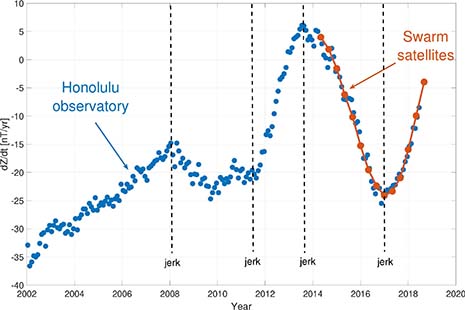
Now, the researchers have been able to document the series of events that lead to jerks which, in the simulation, arise from hydromagnetic waves emitted within the core. As molten matter rises up to reach the outer surface of the Earth’s core, it produces powerful waves along the magnetic field lines near the core. The team explained that this results in sharp changes in the flow of liquid beneath the magnetic field.
The jerks originate in rising blobs of metal that form in the planet’s core 25 years before the corresponding jerk takes place. These current findings are part of a longer-term project in which scientists hope to predict the evolution of the geomagnetic field over the coming decades.

Chris Finlay, professor of geomagnetism at DTU Space , said, “Swarm has made a real contribution to our research, allowing us to make detailed comparisons, in both space and time, with physical theories on the origin of these magnetic jerks. “While our findings make fascinating science, there are some real-world benefits of understanding how our magnetic field changes. “Many modern electronic devices such as smart phones, rely on our knowledge of the magnetic field for orientation information. Being able to better forecast field changes will help with such systems.”
For more information, visit: www.esa.int



